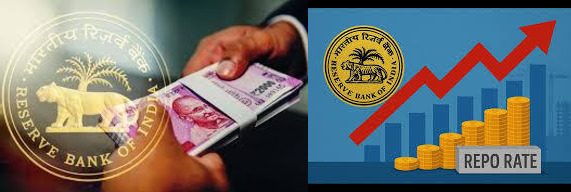
Introduction
On June 6, 2025, the Reserve Bank of India (RBI), under Governor Sanjay Malhotra, announced a 50 basis point cut in the repo rate, bringing it down to 5.50%. This marks the third rate cut of 2025 — following a 25 basis point cut in February and a 50 basis point cut in April — totaling a 100 basis point reduction since the start of the year.
This decision, taken during the 55th meeting of the Monetary Policy Committee (MPC) held from June 4–6, 2025, underscores the RBI’s effort to stimulate economic growth amid low inflation and global uncertainty.
Additionally, the RBI reduced the Cash Reserve Ratio (CRR) by 100 basis points to 3%, in phases from September to December 2025, which is expected to inject ₹2.5 lakh crore into the banking system.
This article explores the reasons, implications, expert opinions, and provides a historical perspective on this strategic monetary policy move.
Understanding the Repo Rate
The repo rate is the interest rate at which the RBI lends short-term funds to commercial banks, making it a cornerstone of India’s monetary policy.
A lower repo rate:
- Reduces borrowing costs for banks
- Enables banks to offer cheaper loans
- Encourages borrowing, investment, and consumption
- Stimulates economic activity
As part of this revision:
- Repo Rate: 5.50%
- Standing Deposit Facility (SDF) Rate: 5.25%
- Marginal Standing Facility (MSF) Rate and Bank Rate: 5.75%
Reasons for the Repo Rate Cut
1. Low Inflation
- Retail inflation (CPI) stood at 3.16% in April 2025, a six-year low, well below the RBI’s 4% target.
- Revised inflation forecast for FY26: 3.7%
- Q1: 2.9%, Q2: 3.4%, Q3: 3.9%, Q4: 4.4%
- Supportive factors:
- Record wheat production
- Normal monsoon expectations (105% of LPA)
2. Global Economic Uncertainty
- Trade tariffs, geopolitical tensions, and slowdowns in global markets pose risks to export-oriented sectors.
- RBI aims to boost domestic demand through lower interest rates.
3. Support for Economic Growth
- Real GDP growth: 7.4% in Jan–Mar 2025
- FY26 GDP projection: 6.5% (Q1: 6.5%, Q2: 6.7%, Q3: 6.6%, Q4: 6.3%)
- RBI focuses on “front-loading” rate cuts to provide certainty in an uncertain global environment.
4. Policy Stance Shift
- MPC vote: 5:1 to shift stance from “accommodative” to “neutral”
- Signals a measured approach to further rate cuts based on data
Implications for the Economy
1. Lower Borrowing Costs
- Affordable loans for consumers and businesses
- Home loans: lower EMIs → boost to real estate
- Auto loans: boost demand for companies like Maruti Suzuki and Mahindra & Mahindra
- MSMEs: easier access to credit
2. Enhanced Liquidity
- CRR cut to 3% to release ₹2.5 lakh crore
- Supports credit growth (9.8% in May 2025)
- Promotes lending in real estate, automobiles, and small businesses
3. Impact on Savers
- Lower returns on fixed deposits
- Experts advise looking into corporate bonds (2–3 years) for better yields
4. Market Reactions
- Equity indices up by 0.7%
- Bank stocks rose
- 10-year government bond yield fell to 6.19%
- Indian Rupee depreciated slightly to ₹85.85/USD, pressuring import-reliant sectors
5. Sectoral Benefits
- Real estate: boost in both affordable and luxury housing
- Auto sector: higher sales potential (e.g., Hero MotoCorp)
- MSMEs and NBFCs in Tier 2/3 cities benefit from increased credit access
6. Potential Risks
- Weaker rupee may raise import costs
- Bank margins may compress due to lower lending rates, though mitigated by CRR cut
Expert Opinions
- Dr. Madan Sabnavis, Bank of Baroda:
“Strategic front-loading will boost credit demand. CRR cut sustains liquidity.” - Anish Shah, Mahindra Group:
“Will spur consumption and MSME investment.” - Rajani Sinha, CareEdge Ratings:
“Neutral stance implies limited further easing unless serious risks emerge.” - Umesh Revankar, Shriram Finance:
“NBFCs, especially in smaller cities, will benefit.” - Indranil Pan, YES BANK:
“Front-loaded cuts align with inflation trends, but likely the last large cut.”
Historical Context: Repo Rate Trends
| Date | RBI Repo Rate |
|---|---|
| 06-Jun-2025 | 5.50% |
| 09-Apr-2025 | 6.00% |
| 07-Feb-2025 | 6.25% |
| 06-Dec-2024 | 6.50% |
| 04-May-2022 | 4.40% |
| 27-Mar-2020 | 4.40% |
| 30-Jul-2008 | 9.00% |
| 05-Jun-2000 | 6.50% |
The 2025 drop in the repo rate is one of the sharpest in recent history, reflecting a pro-growth stance amid global volatility.
Inflation and GDP Growth Trends
Inflation
- CPI inflation fell from 6.2% (Oct 2024) to 3.2% (Apr 2025)
- FY26 projection: 3.7%
GDP Growth
- Q1 2025: 7.4%
- FY26 projection: 6.5%
- Indicates strong momentum, allowing the RBI to ease policy without stoking inflation
Conclusion
The RBI’s decision to cut the repo rate to 5.50% and reduce the CRR to 3% represents a bold, growth-oriented policy shift. The move is designed to:
- Lower borrowing costs
- Enhance liquidity
- Stimulate demand in sectors like real estate, automobiles, and MSMEs
With inflation well under control and the GDP showing strength, the RBI has room to maneuver, though it has clearly indicated future actions will be data-dependent.
This proactive monetary stance is pivotal for ensuring economic stability and growth, especially in a complex global economic environment.






